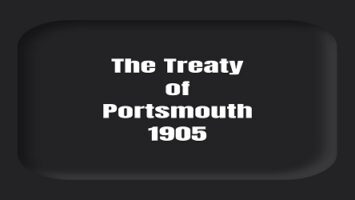Vienna Settlement:
After the fall of Napoleon in 1814, it was decided that a Congress should be held at Vienna to undertake the task of territorial reconstruction. The territorial settlement made at Vienna was signed in June 1815 before the battle of Waterloo. It was in effect made by the representatives of the five Great Powers. There were Tsar Alexander I of Russia, Metternich, the Chancellor of Austria, King Frederick William III of Prussia, Lord Castlereagh, the British Foreign Secretary and Talleyrand, the skilful representative of France. All the powers were represented in Congress except Turkey. After much bargaining, the treaty was signed on June 9, 1815.
One great principle underlying the Vienna Settlement was the restoration, as far as possible, of the boundaries and reigning families of Europe, as they had been before 1789. It was this principle of legitimacy which Talleyrand urged in order to preserve France. In line with this principle, the Bourbons were reinstated in Spain and in the Two Sicilies, the House of Orange in Holland, the House of Savvy in Sardinia, the Pope in the Papal State and a number of German princes in their former possessions. The Swiss Confederation was restored. In the name of legitimacy, Austria recovered Tyrol and most of the territories she had lost.
The second principle involved compensations to those who had played major roles in defeating Napoleon. Prussia was strengthened. She was given a large slice of Saxony, Westphalia and more territory along the Rhine. The strengthening of Prussia on the Rhine made her ultimately the national champion of Germany against France.
Germany was reconstituted as a loose confederation of 39 states with a Diet consisting of delegates of the various rulers. Austria presided over the Diet and dominated the Confederation.
Austria recovered certain Polish lands and received Northern Italy, henceforth to be known as the Lombardo-Venetian Kingdom. She also recovered the Illyrian provinces along the eastern coast of the Adriatic which she had lost in 1809. She also got Tyrol and other valleys of the eastern Alps. Moreover, the restored rulers of Parma, Modena and Tuscany in north-central Italy belonged to the Habsburg family.
Britian, the most persistent enemy of Napoleon and the pay-mistress of the allies took her reward in the form of colonies and naval bases. She occupied Heligoland in the North Sea, Malta and Ionian Islands in the Mediterranean, Cape Colony in South Africa, Ceylon in the Indian Ocean.
The third principle which guided the Congress of Vienna was to provide a guarantee for the future peace of Europe by weakening France. She was reduced to the boundaries which she possessed before the outbreak of the Revolution. Steps were taken to surround France with strong states as bulwarks against future aggressions. Thus in north Belgium, previously an Austrian province, was joined to Holland as one kingdom under the House of Orange. In the southeast, the kingdom of Sardinia-Piedmont was strengthened by the acquisition of Genoa.
Among other important changes, Norway was taken from Denmark and joined with Sweden. Switzerland was strengthened by the addition of three Cantons which had previously been incorporated in France.









Comments (No)